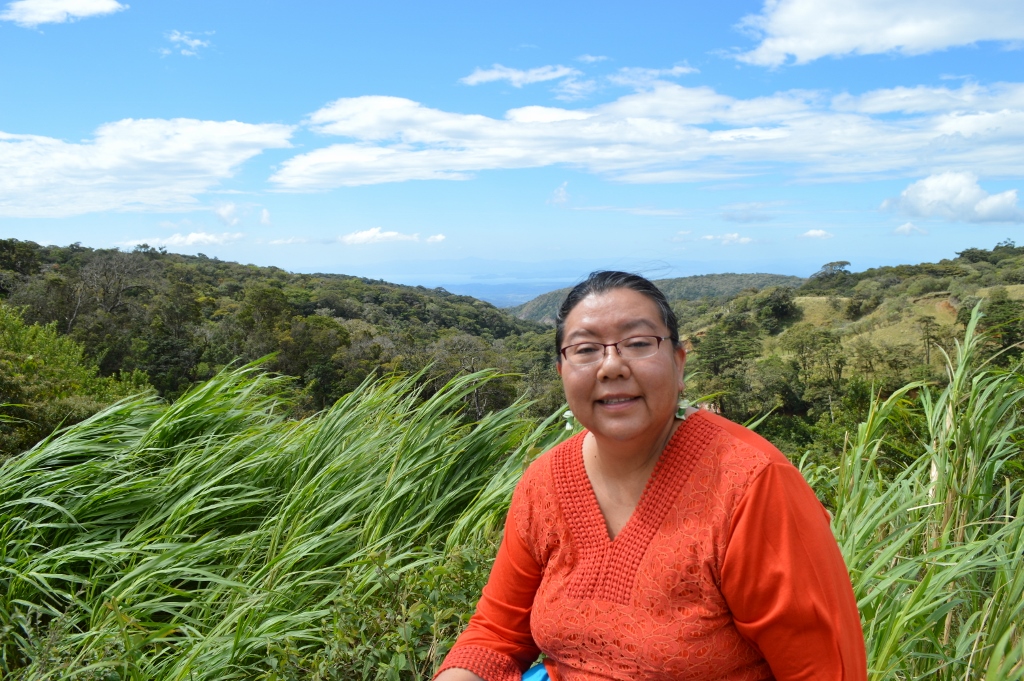Nihiyázhí bizaad: Investigating Navajo Child Language Development
November 1, 2022 - Talullah Begaye
ALBUQUERQUE, N.M.— This year, The Center for Regional Studies (CRS) partnered with the College of Arts and Sciences to financially support community-based research projects focused on New Mexican or Southwestern communities. Two projects were selected for this award: Nihiyázhí bizaad: Investigating Navajo Child Language Development, led by Melvatha R. Chee in Linguistics, and Re-Envisioning Diversion Through Community Engagement, led by Noah Painter-Davis in Sociology.
Melvatha R. Chee’s proposal was selected for her research on the Navajo language and its development in Albuquerque through children.
“Child speakers are foundational to sustaining and maintaining languages,” Chee said. “The opportunity to document child language to understand the acquisition process is quickly disappearing.”

The 10-month study will specifically focus on child-directed speech and how children acquire the language from these interactions. From that, the research will look at what the child-directed speech input looks like; for example if adults use full verbs or what words are most used when communicating with children. The researchers will focus on group interactions between caretakers and children directly and indirectly, which is through video-recording caretakers doing daily activities. The research will then build a database of the child-directed speech.
“In the acquisition of a language, the pre-word stage is an important milestone,” Chee said.
This is the first study to look at Navajo speech specifically directed at children and to document the development from infancy both to and from the child. Research of this kind has not yet been done with any Indigenous language. Within the Navajo community, there is a dwindling number of monolingual speakers, which are a majority of elders.
“Child speakers are the most endangered speakers of minority languages and especially among endangered Indigenous languages,” Chee said.
The research will be conducted in the new Saad K’idilyé Diné Language Nest in Albuquerque that opened this past August. It is a full immersion center that only uses Navajo, which is grounded in Diné culture and philosophy. Chee emphasized the relationship between language and culture, both of which work hand-in-hand with the Diné worldview. It is for this reason that the study is taking place in an urban space off the reservation as an act of reconnection with the culture. Chee spent four years of development and planning on Saad K’idilyé along with Tiffany Lee from NAS, Warlance Chee, Mary Whitehair, and Cherly Yazzie. She is trying to help reform the word research, which has a lot of negative connotations in the Native American community.

Chee claims that the language is seldom being taught as a first language any more, especially in urban settings. This is not uncommon for Indigenous languages due to the lack of programs in urban spaces that help the newer generations in retention. Spolsky reports that 90% of Diné people in 1980 could speak Navajo. However, by the 2010 U.S. census, that number had decreased to 50%, with children being only a small part of that.
The findings of the study will be presented to Saad K’idilyé first before sharing with the broader community. Chee is supporting Saad K’idilyé’s hopes to help revitalize the Navajo language amongst the younger generations in hopes of filling gaps for both academia and her community.
As of yet, the research is still in the video recording stage. Chee said that community response is expected for next summer, though the families involved have given positive feedback and are committed to creating an environment for their children to learn the Navajo language.
